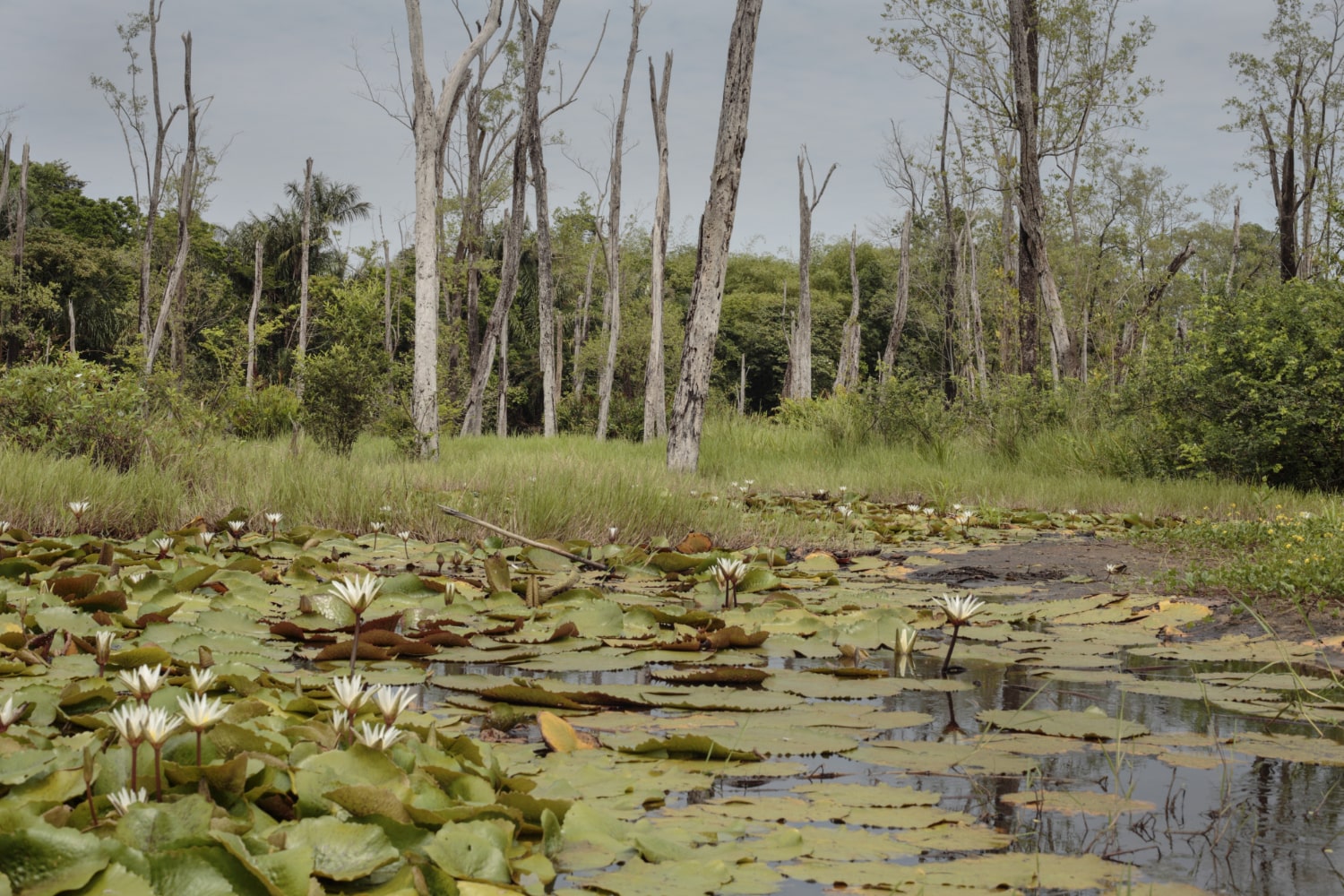Swamps have always evoked mixed feelings in people because they combine the beauty of wild nature with a certain sense of danger. For some, they are gloomy and inaccessible places, while for scientists and ecologists they are unique ecosystems of enormous importance to the planet. Swamps are home to rare species of plants and animals and play a crucial role in maintaining climate balance. Interesting facts about swamps show that they are not just wetlands but real treasures of nature. Many of these fascinating facts you might not have known before.
- Swamps are natural reservoirs of carbon. They accumulate peat made of decayed plant remains that store carbon for thousands of years. This helps to slow down global warming.
- A significant portion of the planet’s fresh water is stored in swamps. They act like natural sponges, holding moisture and gradually releasing it into rivers and lakes. In this way swamps reduce the risk of drought.
- Swamps serve as barriers against floods. They absorb excess water during heavy rains, reducing the danger of catastrophic consequences for settlements. This makes them natural protectors of humans.
- Many unique species of plants live in swamps. For example, carnivorous plants such as sundews and bladderworts adapted to obtain nutrients from insects because swamp soils are poor in minerals.
- Swamps are divided into different types depending on how they form. Scientists distinguish raised bogs, lowland swamps, and transitional types. Each has its own flora, fauna, and hydrological features.
- Some swamps have existed for tens of thousands of years. They formed slowly through the accumulation of plant material and today serve as natural archives preserving information about past climates.
- Archaeologists have found well-preserved bodies of people and animals in swamps dating back thousands of years. In oxygen-poor conditions organic tissues do not decompose but remain nearly intact. This allows the study of ancient civilizations.
- Swamps are of exceptional importance to birds. Migratory species stop here, and many build their nests among reeds and mosses. They provide both food and shelter for bird populations.
- Peat that forms in swamps has been used by humans for centuries as fuel. In some countries it is still used for heating homes or as fertilizer. However, excessive use of peat is harmful to nature.
- Swamps filter water by trapping harmful substances and sediments. They function as natural filters, improving the quality of rivers and lakes. Their ecological role is therefore essential to human health.
- In many cultures swamps are surrounded by myths and legends. They were once considered homes of spirits or evil forces, which gave them an aura of mystery. This shaped people’s attitudes toward such areas.
- Swamps are important habitats for amphibians and reptiles. Frogs, newts, and snakes find ideal conditions for life and reproduction there. This makes swamps an essential part of biodiversity.
- Many countries run programs to restore swamps. Their drainage in the past led to the loss of unique ecosystems, and today ecologists are working to return these areas to nature.
- Some swamps emit methane gas, which is produced by the decomposition of organic material without oxygen. Occasionally this gas ignites, creating mysterious lights known as swamp fires or will-o’-the-wisps.
- Swamps have become recreational areas that attract tourists. People come here to watch birds, study plant life, or simply enjoy the silence. They are important for the development of ecotourism.
- Numerous insects live in swamps, including mosquitoes. Although their presence is unpleasant for humans, they are part of the food chain and play a role in nature.
- Swamps help maintain climate balance in their regions. They preserve humidity, regulate temperature, and influence microclimate formation. This is vital for nearby forests and agricultural land.
- Swamps have inspired artists and writers. Their mysterious landscapes and unusual atmosphere often became themes of paintings, poetry, and legends. In this way swamps influenced culture as well.
- Some swamps have very acidic water. This limits the growth of typical plants but provides opportunities for specialized species adapted to such conditions.
- In the past swamps often served as natural borders. Their impassability protected settlements from enemy attacks and became barriers for armies. In this sense they played a defensive role.
- Swamps attract scientists studying global climate processes. Sediment layers that accumulated over thousands of years make it possible to reconstruct pictures of ancient climates.
- Some swamps are home to rare mammals such as otters and beavers. The abundance of water and food provides them with ideal conditions for life.
Swamps are extraordinary ecosystems that perform many important functions for both nature and humans. Interesting facts about them prove that they cannot be underestimated or considered only useless land. Incredible facts about swamps reveal their role in preserving climate, biodiversity, and cultural heritage. Fascinating facts confirm that swamps are true treasures of nature that deserve our attention and protection.





